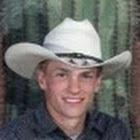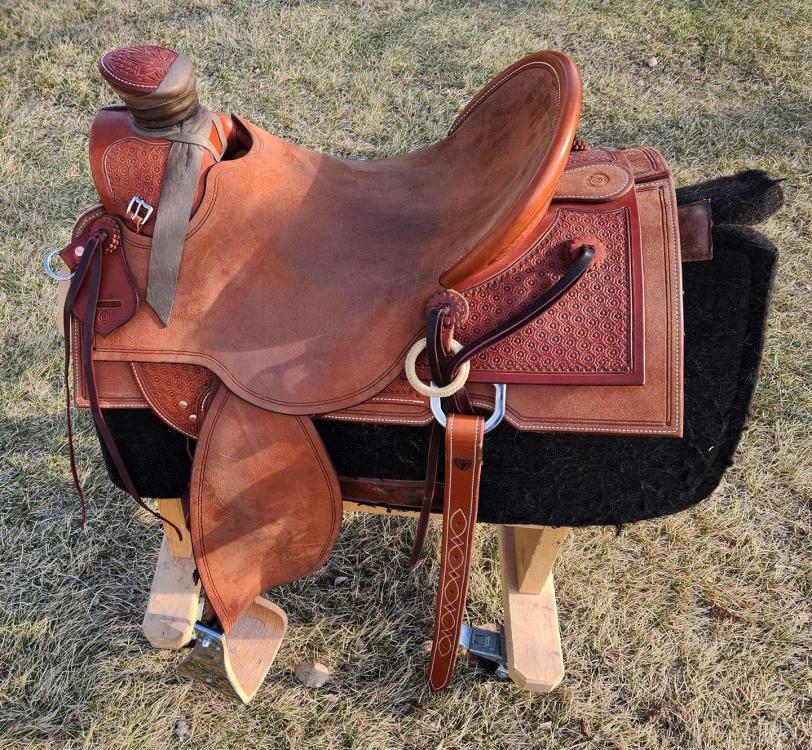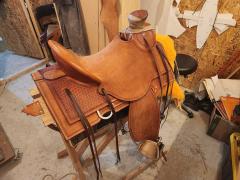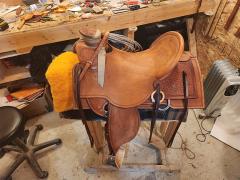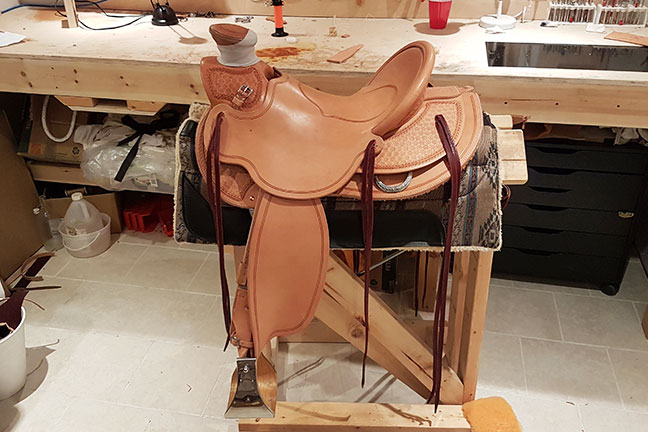-
Posts
366 -
Joined
-
Last visited
Profile Information
-
Gender
Male
-
Location
Canada
-
Interests
Learning, Saddle Construction, Horsemanship, Stockmanship, Roping
LW Info
-
Interested in learning about
Everything.
-
How did you find leatherworker.net?
Google
Recent Profile Visitors
10,885 profile views
rdl123's Achievements

Member (2/4)
-
Diesel tech: On patterns, I just built my own set - What I did was found a maker who I liked the look of their saddles and tried to re-create that in my own way. It's a learning curve - I change my patterns as time progresses to reflect things learned! I have also never built a saddle i was completely happy with - This square skirt was a challenge and I'd change up my skirt lines next time. It looks a bit 'downhill' on some horses. Goldshot Ron: On the rough out - I bought this hide (Hermann Oak) from Montana Leather - It comes 'buffed' and is like that from store - I do not like 'rough' rough outs. This is my first half breed. I built this saddle for a friend and he let me try it for a few weeks - I really liked how it felt. On the saddle horn - This is a Swanke tree and I am 75% sure I asked for a 3/4" slope from front to back of horn. It is nice to rope out of - Used it for starting a colt and was happy with how it felt. On the rear dees - They are Jeremiah Watt. Bruce Johnson - Thanks for that advice! I am using a vintage round knife I bought from you and a hand splitter - Sure appreciate the good tools! Here is a pic of saddle with a couple rides on it. Stirrups are set for me which is too long for this saddle design - My friend has shorter legs and it looks better with stirrups up about 2".
-
Hello Randy - Min is the JW stamp too!
-
Latest build 95% complete - Square skirt wade on a Swanke tree - This has been a slow build! All Hermann Oak leather - Tin seat strainer.
-
Nice job Randy!
-
Hello Randy, I have dyed horn wraps in the past and had no issues. However, I personally use any decent chap leather or used old tie latigos for my horn wraps - Just put them on rough side out. If you cut a piece of burgundy latigo and thin it down to 6 or so oz it should work fine! Ropes run fast on latigo horn wraps if its a really firm leather! Soft chap leather grabs a rope a lot more, firm stuff will take more dally's to get something big stopped! I personally won't use latigo smooth side out. It can be tough for a rookie like me to get enough dallies on fast enough if things get western. Check out these guys: https://www.dhrss.com/hornwraps.html They stock latigo, regular and dyed wraps. I have heard good things about boar hide. Apparently it stands up well. https://www.dwdixonsaddles.com/store/p262/Boar__Hide_Horn_Wrap.html In my opinion most important thing is to have a nice funnel shape down to base of horn so your dallies stack nicely. Cheers, Ron L
-
That saddle is a serious inspiration Ed - Beautifully clean work!
-
Hello Dirty Dusty, I am a very amateur maker so take my thoughts with a grain or three of salt... I was taught that the dee rings should be set up to tear out on their own in the event of a major wreck. I always attach mine independently of any major components so that if something really gets westy they will break and not wreck something major like a rigging plate. I usually build mine of leather laced together with kangaroo lace. I have a saddle in for repair right now where the maker had attached the breast collar dees with tin loops riveted into the rigging plates. The owner had a decent wreck with a colt and by the time the saddle broke free of the horse the breast collar had pulled the dees out of the rigging plates making for a fairly major repair. The rigging plates were ripped nearly in half. Just my 2 cents. RDL
-
Hello Dirty Dusty, Fender design, like a lot of saddle design, is fairly subjective. Goal of a fender is to protect your leg from the sweaty side of horse while working with your stirrup leathers to actually support your foot. I personally do not like the aesthetic of a fender than angles forward and then returns back. Here is a picture of they shape I prefer and it has never caused me any issues in the years I have road this saddle. RDL
-
I use the same sewing machine make / model and have experienced the same thing - Basically as the leather thickness increases - The stitch length decreases. What I have done lately is start sewing with a lot of 'spare' thread hanging out creating a long 'tail'. I start sewing with the machine four or so stiches from the hardware or wherever the piece gets thick - I then go back and hand stitch to the end of the piece using the extra long tails I left when I started machine sewing. I get the best results this way. Takes a little longer - But if I really want it to turn out perfect that's what I do. I'd say your halter looks very tidy though! Ron L
- 16 replies
-
- halters
- machine sewing issue
-
(and 2 more)
Tagged with:
-
Looks good Randy, Your seat shape looks very comfortable. Swell fork saddles intimidate me as I have only built slick forks so far! The only thing I see is maybe that if the rear jockey was a little lower you could hide the leather that holds the rear D ring in place. That is minor though! Be nice to see some pictures of it strapped onto a horse... Good work Randy - Happy trails! Ron L
-

First Saddle - 1/2 tooled Cliff Wade
rdl123 replied to MLGilbert's topic in Saddle & Tack Maker Gallery
That saddle is a thing of beauty! Very impressive. Really like your tooling and the smoothness of the lines and edges of your rig MLGilbert. Very nicely done! I agree with EdOdgers on ground seat and learned the exact same lesson on first saddle I built. I can also vouch for his advice on stitching cantle bindings - It is what I like to do and the technique he outlines has helped me a lot. Very good work MLGilbert - Look forward to seeing more! -
From the perspective of roping and tieing down larger animals I like the idea of the rear rigging ring attached further back just like it is shown on the two recent saddles you have pictured. In my mind it gives more leverage against the saddle lifting...Especially when you are taking a hard pull from off the front end of the horse. I've seen horses tied off to big animals where the back of the saddle had a 8" gap between the skirts and the horses back - I cant see that feeling good for the horse as the tree would be tipped up on the bar ends into the wither pocket... However, most of us are guilty of occasionally packing our rear cinch around hanging loose - At which point the rear rigging attachment location is a moot point as it is strictly 'decorative' in that case! Ron L
-
Wow! That saddle is beautiful - Really like the clean lines and the combination of roughout vs tooled! Excellent work! Ron L



